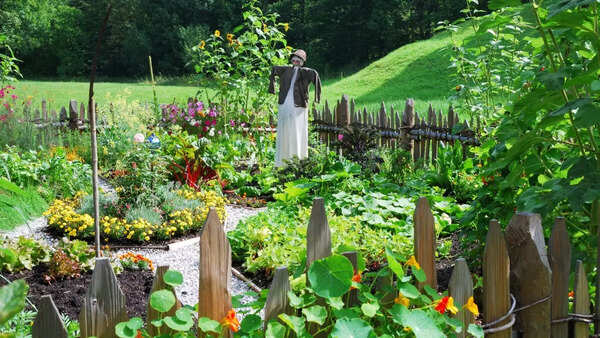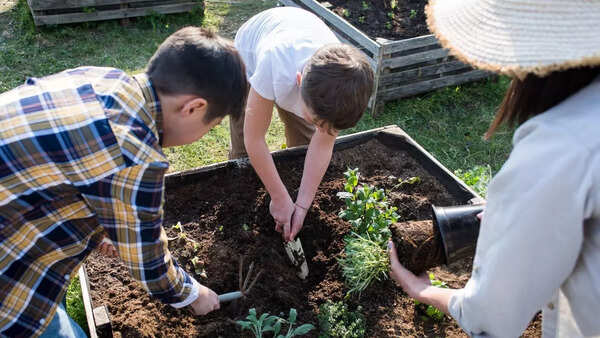The monsoon season revitalizes the Earth, quenching its thirst and alleviating the summer's heat. This period presents an ideal opportunity for gardeners to cultivate, sow, and nurture their own kitchen gardens. The combination of abundant rainfall, softened soil, and moderate temperatures creates a nurturing environment for plant growth.
Whether you're an experienced gardener or a novice, the monsoon provides the perfect conditions to grow your own food.

As the rains enrich the soil, your garden will burst with vibrant greenery, crisp vegetables, and colorful flowers. Embrace this opportunity to reconnect with nature, get your hands dirty, and experience the satisfaction of growing your own food. Each seed sown and harvest reaped brings joy and fulfillment from nurturing life.
The monsoon's gentle showers keep the soil consistently moist, reducing the need for frequent watering. Temperatures ranging from 20°C to 30°C (68°F to 86°F) encourage seed germination, while high humidity enhances nutrient absorption. To ensure success, prioritize proper drainage to prevent waterlogging.


Monsoon rains soften compacted soil, making it easier to till and aerate. To improve fertility, incorporate organic compost, farmyard manure, or leaf mold, which will decompose rapidly in the moist conditions, releasing essential nutrients. Natural additives such as neem cake or bone meal can further enhance nutrition and pest resistance.
Before planting, assess soil drainage by filling a small hole with water; it should drain within 2-4 hours. For clay-heavy soil, add cocopeat or coarse sand to improve aeration and prevent waterlogging, promoting healthy root development.
Newer articles
Older articles
 Team India Settles in Birmingham: Rahul's Mattress, Coaches' Strolls, and the Enduring Coffee Ritual
Team India Settles in Birmingham: Rahul's Mattress, Coaches' Strolls, and the Enduring Coffee Ritual
 Android Users Urged to Patch Devices Immediately Following Critical Security Flaws Alert
Android Users Urged to Patch Devices Immediately Following Critical Security Flaws Alert
 Ashada Gupt Navratri 2025: Dates, Auspicious Timings, and Esoteric Significance Explained
Ashada Gupt Navratri 2025: Dates, Auspicious Timings, and Esoteric Significance Explained
 JPG to PDF: A Graphic Designer's Guide to Conversion & Best Practices
JPG to PDF: A Graphic Designer's Guide to Conversion & Best Practices
 Skin Cancer Alert: How to Identify Suspicious Moles and Early Warning Signs
Skin Cancer Alert: How to Identify Suspicious Moles and Early Warning Signs
 IRCTC's AskDisha 2.0: AI Chatbot Streamlines Train Ticket Booking, Refunds, and Travel Information
IRCTC's AskDisha 2.0: AI Chatbot Streamlines Train Ticket Booking, Refunds, and Travel Information
 The stat that could swing every NBA team's 2025-26 season
The stat that could swing every NBA team's 2025-26 season
 Bollywood's Mythological Muse: How Indian Epics Inspire Cinematic Storytelling
Bollywood's Mythological Muse: How Indian Epics Inspire Cinematic Storytelling
 Bollywood Flashback: Jackie Shroff Accused of Untoward Advance on Young Tabu at Danny Denzongpa's Party
Bollywood Flashback: Jackie Shroff Accused of Untoward Advance on Young Tabu at Danny Denzongpa's Party
 Popular Finance YouTuber's Account Hacked: Bitcoin Scam Alert and Security Tips
Popular Finance YouTuber's Account Hacked: Bitcoin Scam Alert and Security Tips